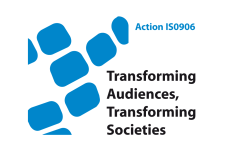- About the Action
- Events
- PhD workshop - Ljubljana 2014
- Action Open Conference - Ljubljana 2014
- New Media and Participation conference - Istanbul 2013
- Belgrade meeting 2013
- Media literacy research and policy - Brussels 2013
- ICA Pre-Conference 2013
- Tampere meeting 2013
- Budapest workshop 2012
- Milan meeting 2012
- Brussels PhD workshop 2012
- Brussels Action workshop 2012
- London meeting 2011
- Zagreb Conference 2011
- Lisbon meeting 2010
- Affiliated events
- WG 1
- WG 2
- WG 3
- WG 4
- Cross-WG
- Output
Public Privacy: Private Information and Photos on Social Network Sites.
Trültzsch-wijnen, S. (2011). Public Privacy: Private Information and Photos on Social Network Sites.. IAMCR conference 2011: "Cities, Creativity, Connectivity". 13-17 July.
Abstract: The paper discusses an aspect of cultural change driven by new communication technologies of the social web (web 2.0) focussing on the differentiation of privacy and public. Since life in big cities is characterised by anonymity and a sense of isolated privacy – it seems to be a paradox that young people publish their private life on Social Network Sites (SNS). In the profiles private information is presented as text elements but also as photographs. The role of photographs in a change towards a new culture of ‚exhibitionism‘ is of special importance: They better attract attention to one’s SNS-profile than written information can do, since they have an authentic style in presenting parts of private life. (XX 2009, 2010; Fahlenbrach 2009) In this argumentation two related dimensions are relevant for attracting attention: content and the mode of presentation. These took centre stage in a study on StudiVZ; one of the most popular SNS among young people in German-speaking countries – especially among students who live in bigger cities. The research-questions were: How many users present private information to the public without privacy restriction options? What and how many text elements and photos are presented? What can be seen on the photos – and in what way are they arranged? (Relation between the two dimensions) Two methods where combined in an analysis of 400 profiles of the SNS StudiVZ from Austria, Germany and Switzerland: The elements of each profile where analysed with a partly standardised thematic content analysis (Flick 2009), using different schemes for text and photo elements. (Quantitative data for usernames, text elements, photos etc.) For the analysis of the photos a complex qualitative method of categorization was used. The two dimensions content and arrangement each operationalized with a three-level-scheme where crossed: Each picture was located in a complex nine-square-scheme. The results show that most profiles published nearly all text-information to a non-selected public, but most of the published pictures are moderate in content and style. The paper will present complex and differentiated results regarding text elements and especially photos with focus on changes in concepts of public and privacy.

